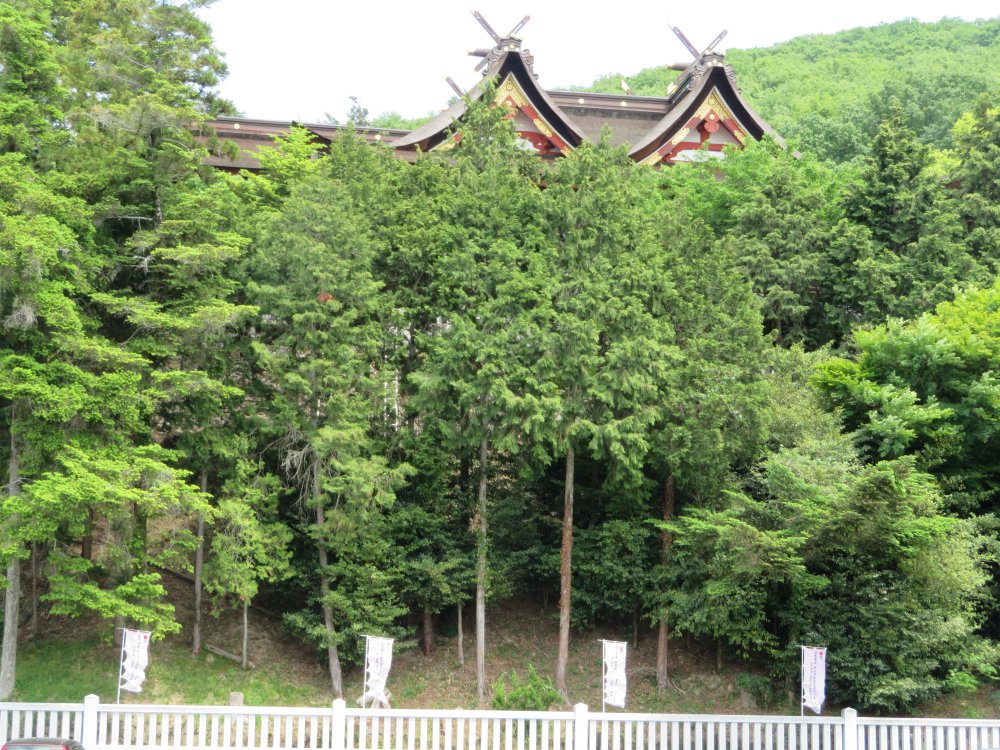
Rediscovering Japan

Rediscovering Japan
Travel (Okayama Part 2 (Bizen/Tsuyama City/Kibitsu))

by tomizuta
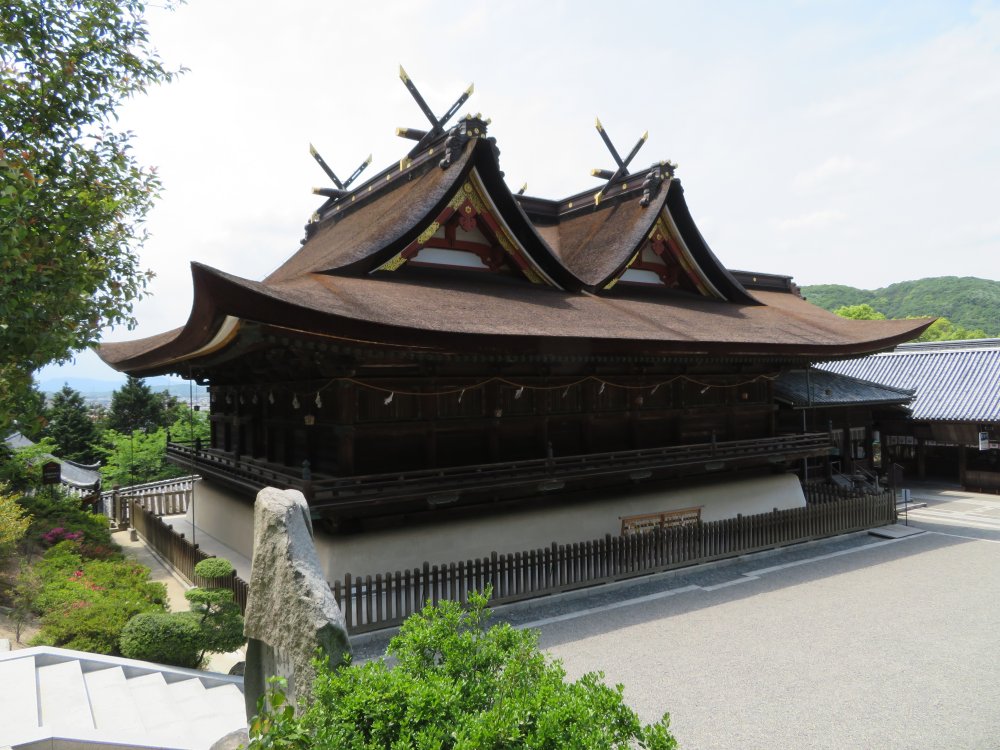
The magnificent double-roofed main shrine (honden) of Kibitsu-jinja Shinto shrine has been designated as a National Treasure of Japan.
Taking the opportunity of a visit to Hiroshima City after the ten-day long 2019 Golden Week, we spent two days in the north western region of Okayama Prefecture. We had already visited the cities of Takahashi and Kurashiki, but never to the historic cities of Tsuyama or Bizen. We first paid a visit to Shizutani Gakkou (school) in Bizen City. The eastern part of Hiroshima Prefecture and Okayama Prefecture was a land known as Kibi until it was split into three administrative districts by the Yamato Imperial Court in around the 7th century. The closest district to Nara and Kyoto was Bizen, “zen” meaning “front”, which covered the cities of present day Okayama, Setouchi and Bizen. The second closest was Bicchuu, “chuu” meaning “middle” covering present day Takahashi and Kurashiki, and the farthest Bingo, “go” meaning “behind”, covering the Fukuyama and Onomichi area.
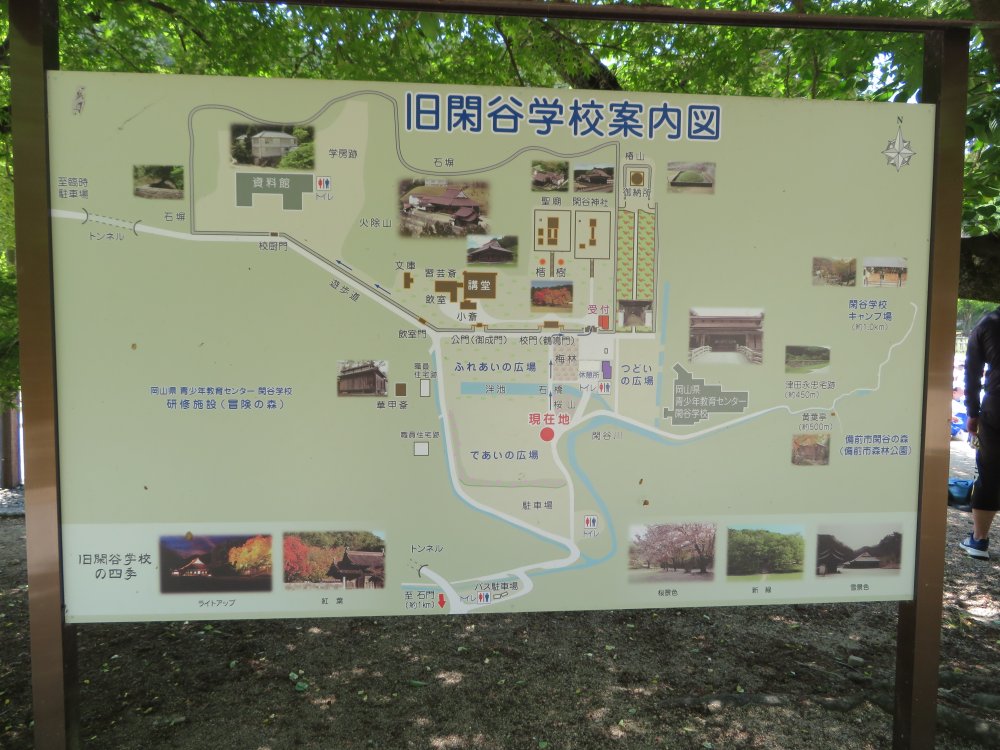
There was a map of Shizutani Gakkou by the car park.
From the Heian to Kamakura era, the area being a good rice growing area, many parts were designated as estates owned by the nobles or temples and shrines in Kyoto. Industries such as swords using iron sand from the mountains and Bizen pottery developed in the area. The feudal lord that governed Bizen during the civil war period was the Ukita Family. After Ukita was defeated in the Sekigahara War against the Tokugawas, eventually the Ikeda Family became the feudal lord of Bizen which lasted till the Meiji Restoration. Shizutani Gakkou was established in 1670 in the quiet valley of Shizutani by order of the feudal lord Mitsumasa Ikeda. who strongly believed that education was the foundation of a strong feudal domain. For the samurais he had established a feudal domain school (hankou) in the castle town of Okayama. He had also started 123 smaller schools in Bizen, which were integrated and concentrated into Shizutani Gakkou. The school was open not only to the samurai class but also to commoners, which was very unique at the times. Students would board and learn to read and write upon which they would leave. Higher education was provided for those that remained by prominent scholars.
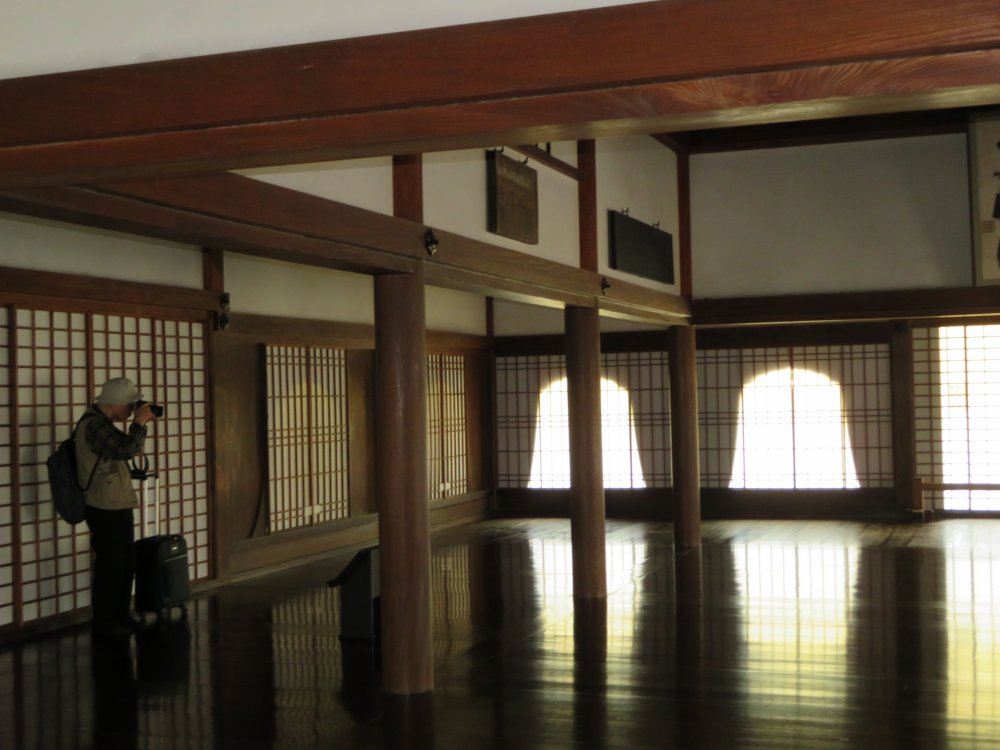
The interior of the grand hall in the koudou building built in 1701 and designated a National Treasure. You are not allowed to enter the hall. It is a pity that some people just ignore the rules. This tourist had even brought his suitcase and placed it on the wooden floor!.
We paid the admission fee of 400 yen and went in to the school grounds. Admission for those over 65 is 200 yen. At a glance we noticed how large the school grounds were with many scattered buildings. We wanted to visit the Shizutani Gakkou Museum on the premises, but this was in the back and not visible from the entrance area. The first that caught our eyes was Shizutani-jinja Shinto shrine.This is a shrine dedicated to Mitsumasa Ikeda who initiated the opening of the school. Unfortunately, the shrine was undergoing some major refurbishing.
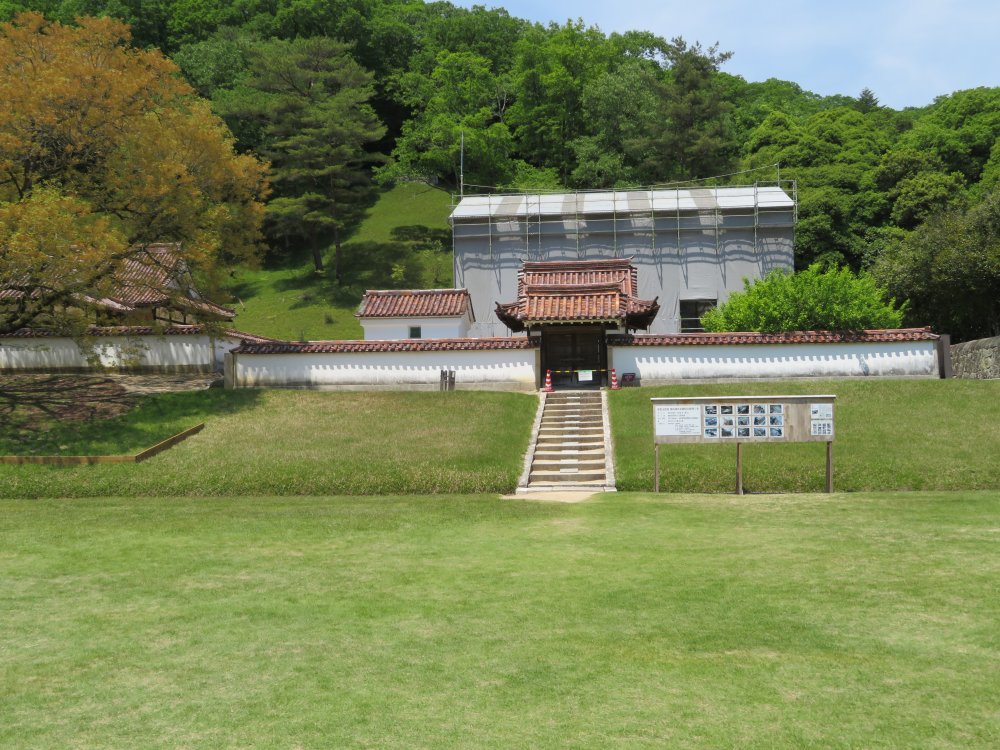
Unfortunately, the Shizutani-jinja Shinto shrine was undergoing some major refurbishing.
The next that caught our attention was the grand school gate. This gate built in 1684 was called Kakumei-mon, or “crane crying gate”. The roof tiles are of Bizen pottery and has two shachi (mythical creature with a head of a lion and body of a fish) statues atop.
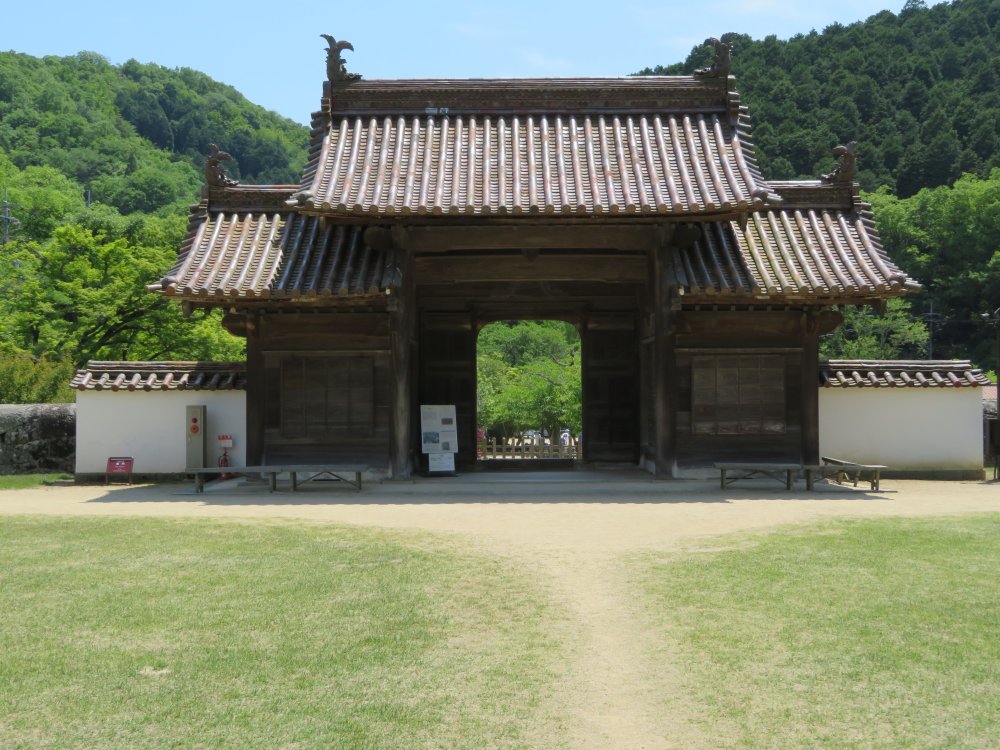
The grand school gate.
From there we went to visit the museum in the back to gain some knowledge before visiting the main buildings. On the way we noticed the unique sidewalls. A description told us “It is about 765 meters long about 1.8 meters wide and about two meters tall…(The wall) was skillfully crafted with stones and has a semicylindrical form which is rare in Japan”. The foundation is over two meters deep.
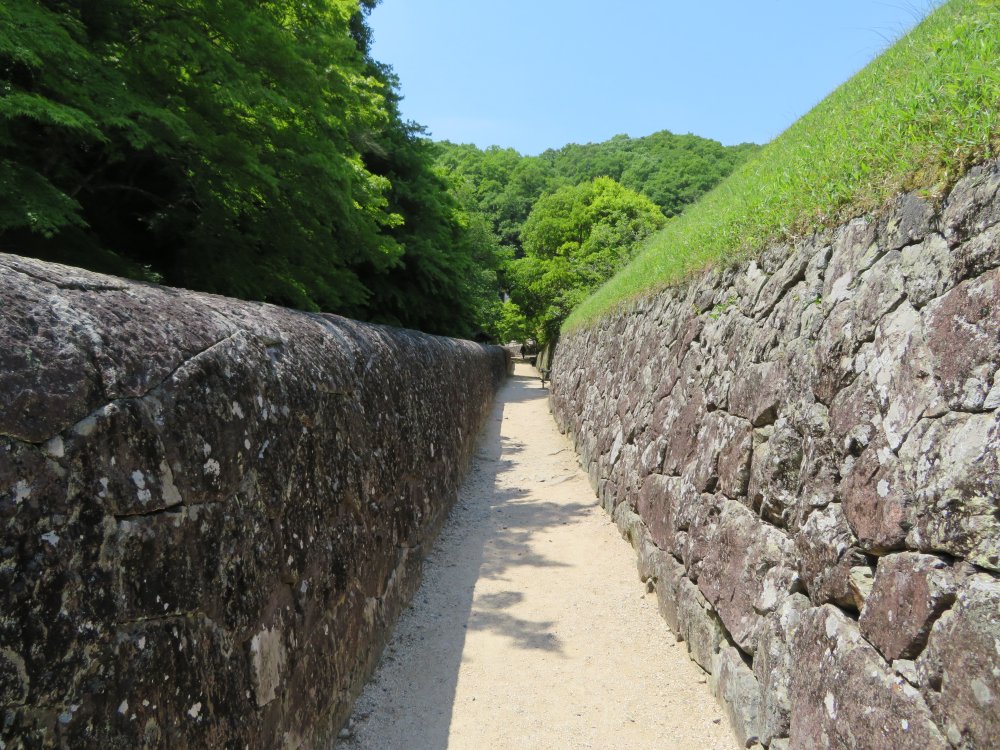
On our way to the museum we noticed the unique sidewalls.
The museum is on an elevated level on a hill. The building was constructed
in 1905 as the main building of Shizutani Chuugaku (equivalent of a high
school) and used as a school building until 1964. The museum houses an
extensive display of Shizutani School, education during the feudal era
and the people that contributed to the school.
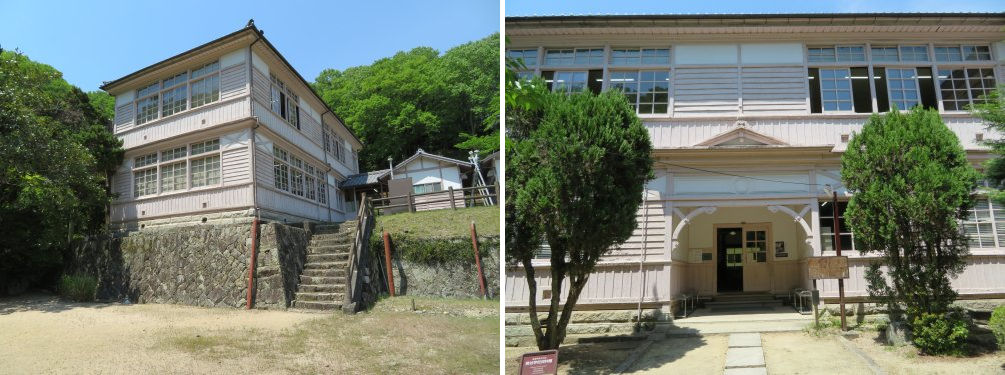
The building was constructed in 1905 as the main building of Shizutani Chuugaku (equivalent of a high school) and used as a school building until 1964.
We went back to view the main buildings. We went past the library and the café where teachers and students relaxed and enjoyed tea.
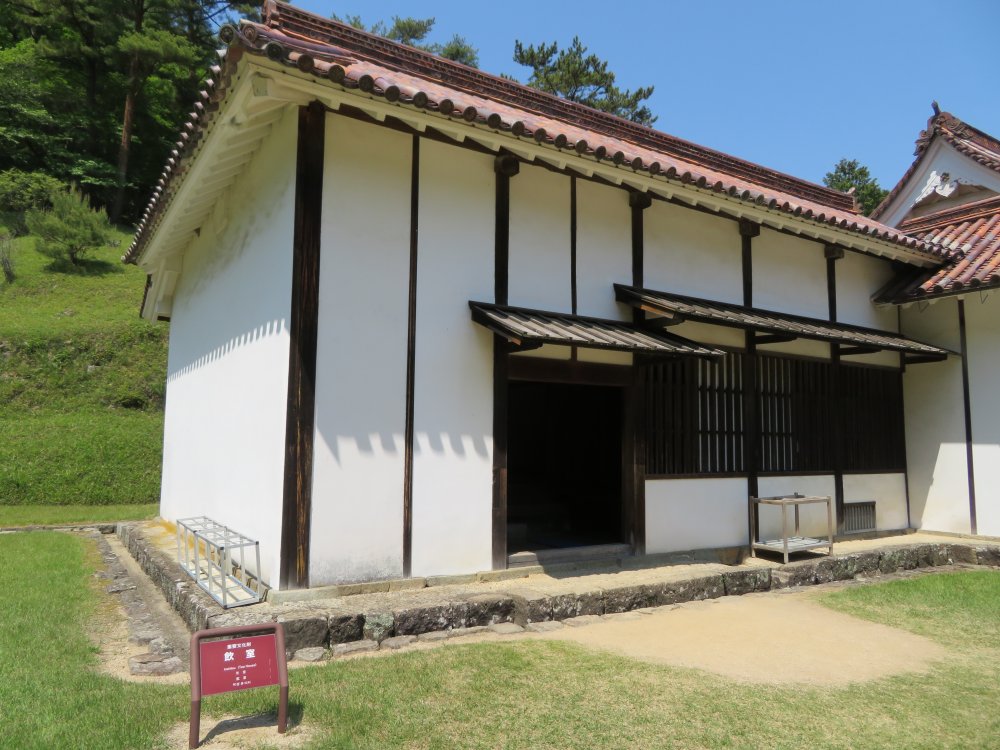
The cafe where teachers and students relaxed and enjoyed tea.
We finally went into the Koudou built in 1701. Here in the grand hall, the four books of Confucianism were taught on the first and every fifth day after the first every month. You are only allowed to take a peek of the grand room with wooden floors.
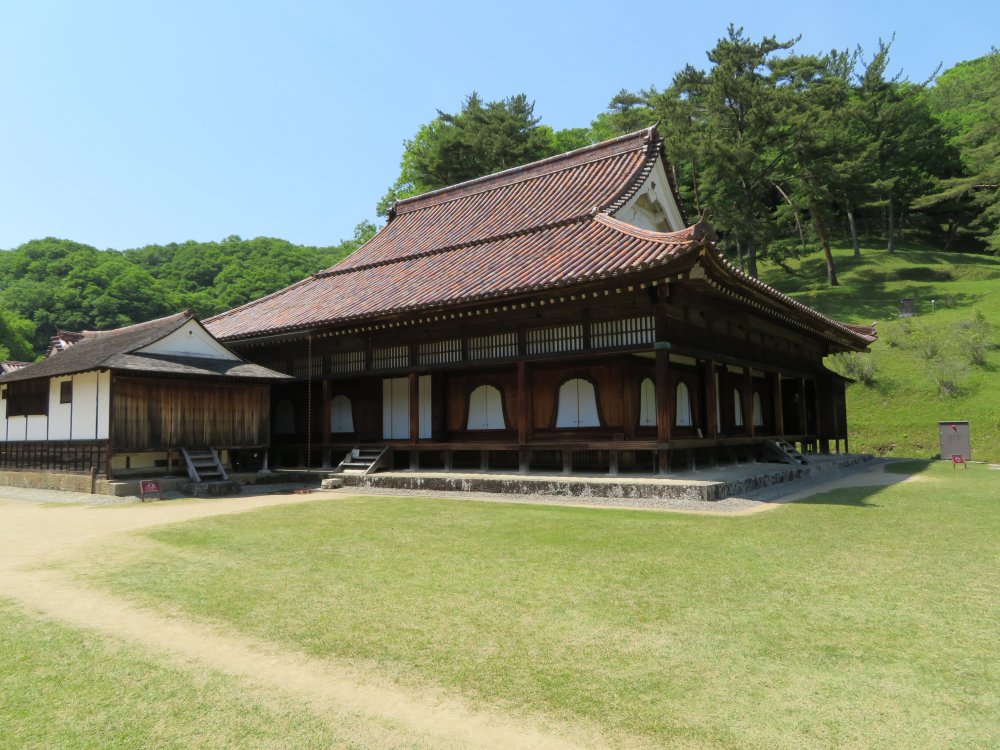
The Koudou built in 1701 has been designated as a national treasure.
Also worth noting is the Koumon gate built in 1701 for VIPs to enter and the Seibyou, a mausoleum dedicated to Confucius standing on the most prestigious site on a hill in the center back of the school grounds built in 1684. All the buildings from the Edo era have been designated as national treasures. It was a much more impressive ninety minutes’ visit than we had expected.
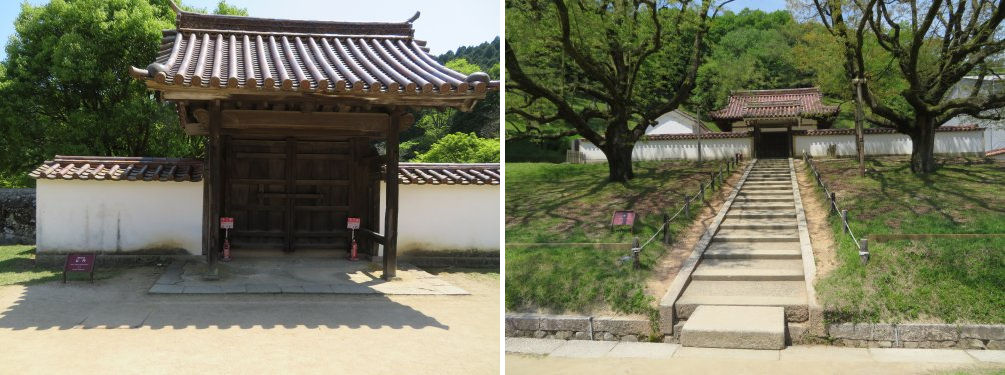
Koumon entrance gate (left) and the Seibyou (right).
We left Shizutani School for our next destination, Tsuyama City. Tsuyama, known as the little Kyoto of Mimasaka was a place I had long wanted to visit. Tsuyama’s development was quite early because of its strategic location on the route from Kyoto to Izumo. During the civil war period the Yamana Family were the rulers who first constructed Tsuyama Castle in the 15th century. After the civil war, Tadamasa Mori became the feudal lord of Mimasaka. The Mori Family was replaced by the Matsudaira Family in the late 17th century that governed till the Meiji Restoration.
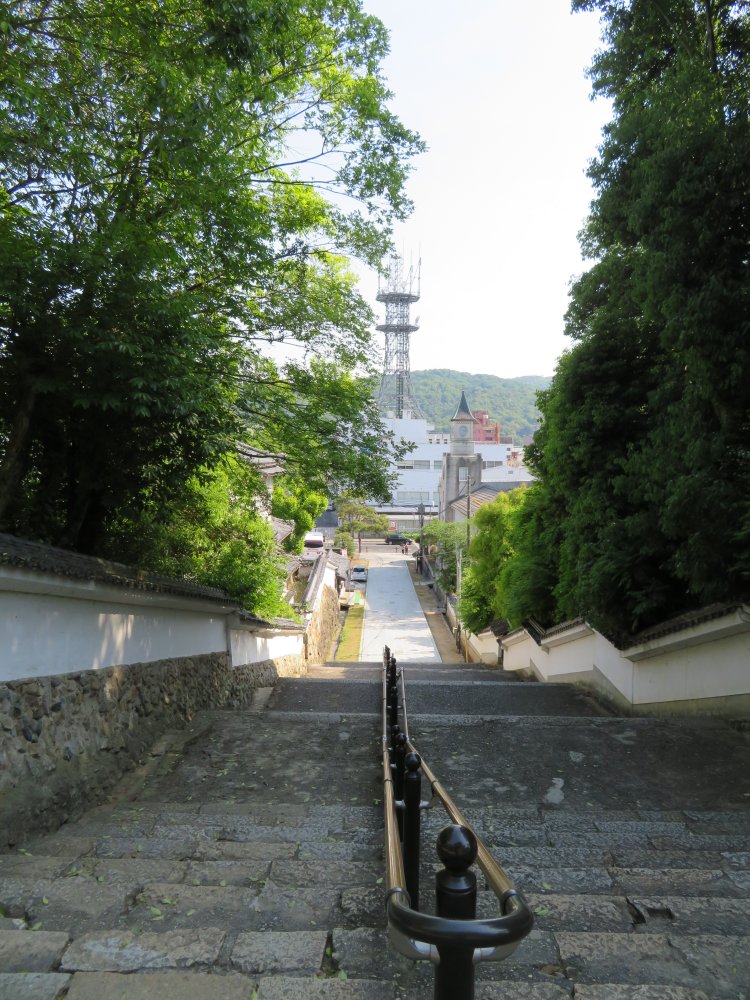
On our way we noticed a steep alley going downhill to the city center.
We parked at the free car park on the western side of the castle grounds. From there it was a ten minutes’ walk to the admission office on the south side. On our way we noticed a steep alley going downhill to the city center. By the admission office was a statue of Tadamasa Mori the feudal lord that initiated the expansion of the castle which took 13 years until its completion in 1616.
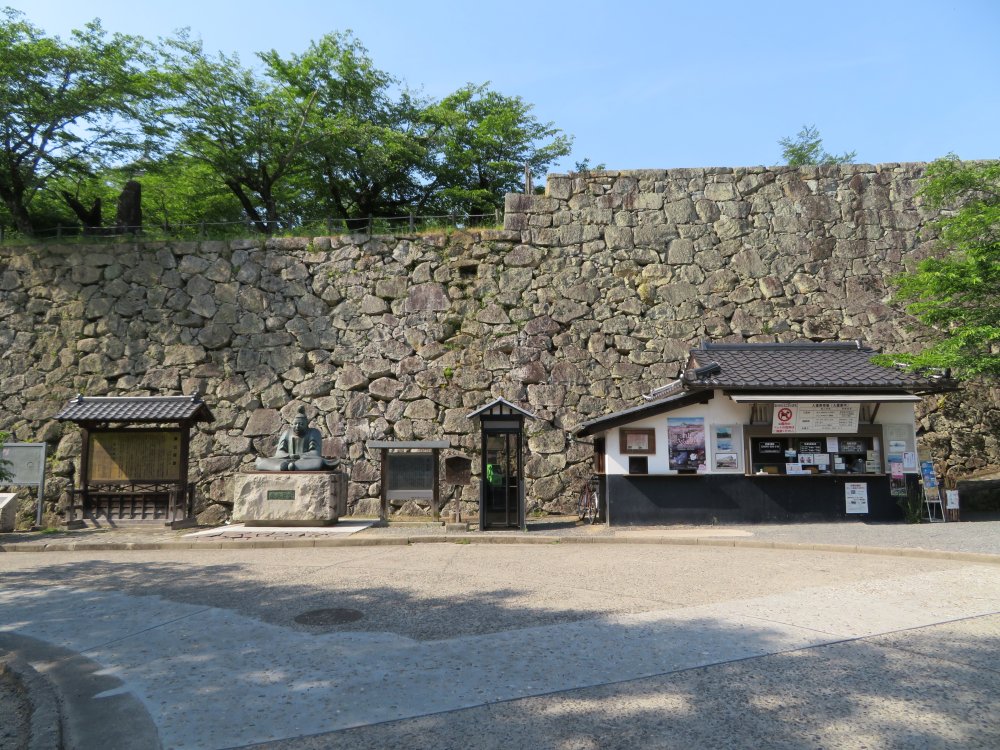
By the admission office was a statue of Tadamasa Mori the feudal lord that initiated the expansion of the castle which took 13 years until its completion in 1616.
We paid the admission fee of 300 yen and entered the castle grounds. The castle which at its peak, boasted having seventy buildings was one of the most magnificent in feudal Japan. We subsequently learned through a video aired in a castle building that this was because historically the land had many local samurai lords to which the Mori Family had to demonstrate his power and presence. All the castle buildings were dismantled by 1875, and since 1900 has been a municipal park of Tsuyama City. One building, Bicchuu Yagura has been reconstructed in 2005. We were recommended at the admission office to first go up to the main castle area (honmaru) and visit the Bicchuu Yagura, then the castle keep site and from there the north western route back to the castle entrance. We went up the wide stone steps that zig-zagged to reach the vast honmaru area.
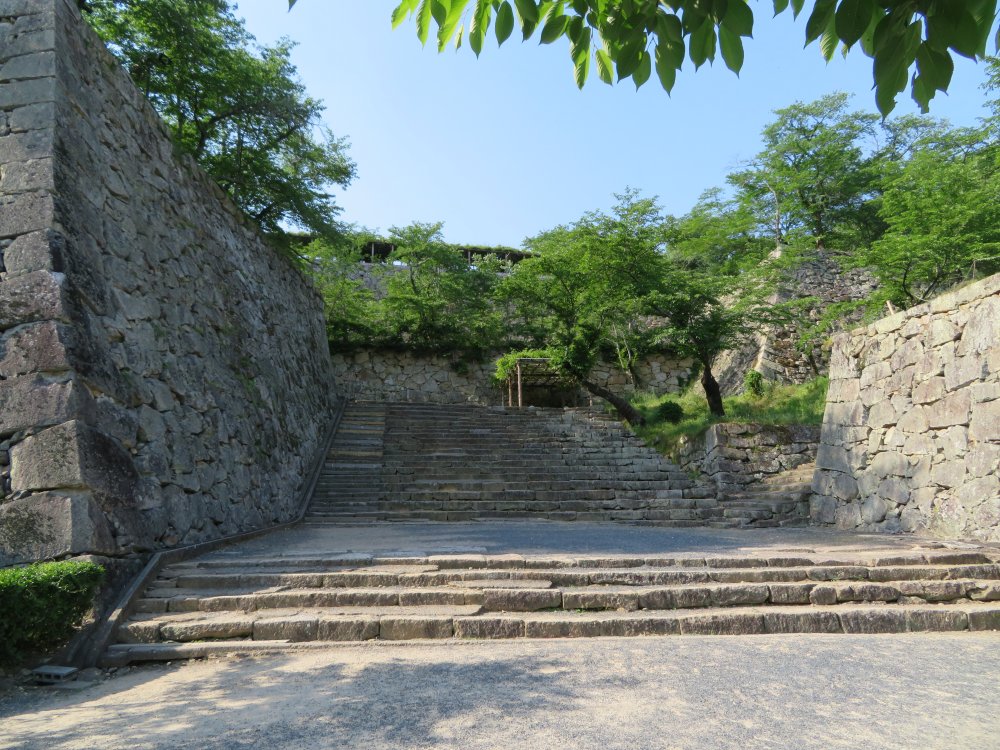
We went up the wide stone steps that zig-zagged to reach the vast honmaru area.
We entered the reconstructed Bicchuu Yagura. This is where we saw the video of the reconstruction work and learned more about the castle. We briefly toured the first and second floor. Following the advice we went west to the former castle keep area. From there we could command a superb view of Tsuyama City.
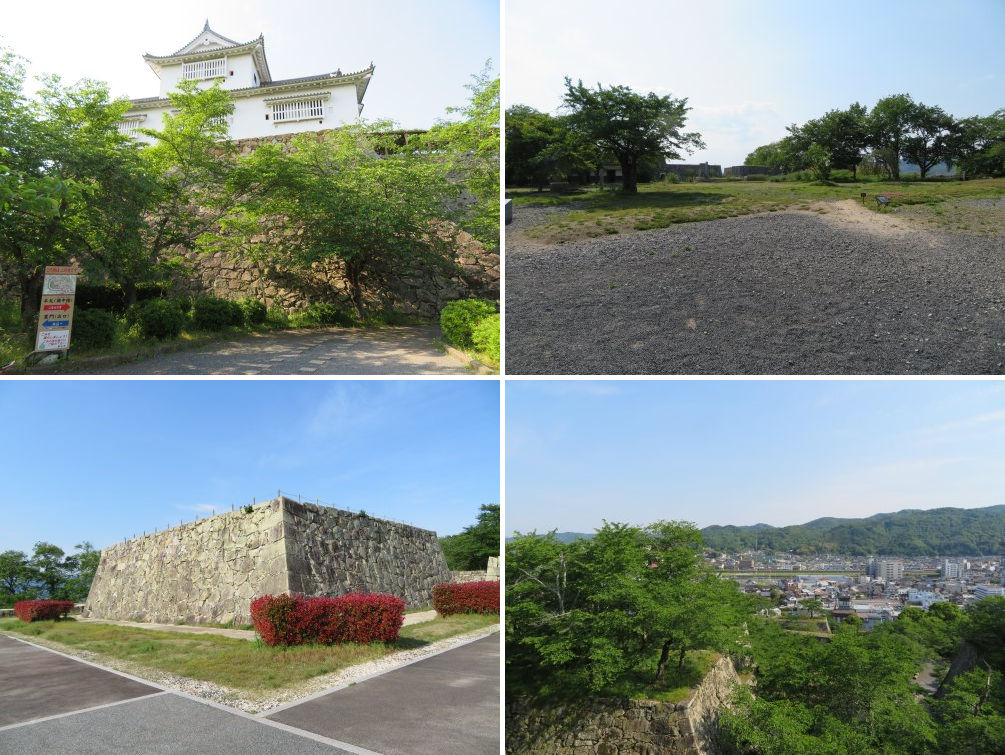
The Bicchuu Yagura (upper left), the vast main castle area (upper right), the stone foundation of the castle keep (lower left) and view of the city from the keep area (lower right).
On our way back via the northwestern route, we noticed some ongoing excavation work. We had seen similar efforts at Takeda Jinja (formerly Tsutsujigatani Castle) in Koufu City. While I hope such efforts will lead to further discoveries, I couldn’t help but notice the deterioration of the grand castle stone foundation, which I understand is a common challenge for the preservation of Japanese castles.
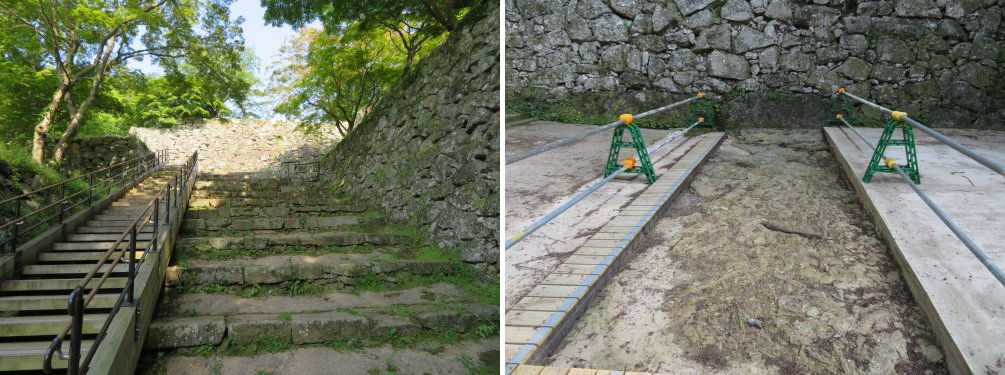
The stone castle steps in the northwestern area and the excavation at the bottom of the steps.
The township of Tsuyama in the feudal area was composed of three districts. The samurai residence area on the west (Jousai district) the merchant area in the south where area names such as Moto-uo-machi (uo meaning fish) or Kaji-machi (ironmongers’ town) and the lodging and merchant area on the east along the old Izumo Kaidou route Japan (Joutou district). The Izumo Kaidou was a route stemming from Himeji in Hyogo Prefecture and leading to Izumo in Shimane Prefecture via Tsuyama. We went to visit the historical area of the Jouto district designated as an Important Preservation District for Groups of Historic Buildings quite recently in 2013. We really struggled to find the car park but finally found it at the eastern end of the designated area. The area retains much of the features of merchant shops on both sides of a major route. One historic building built more than 300 years ago is open to the public but had already closed at 16:30. This building belonged to a financial merchant, the Kajimura Family. You may be disappointed if you compare this area with other designated Important Preservation Districts along major kaidou routes such as Oouchijuku in Aizu or Naraijuku in Nagano but I understand efforts are being made to improve the overall image of the district.
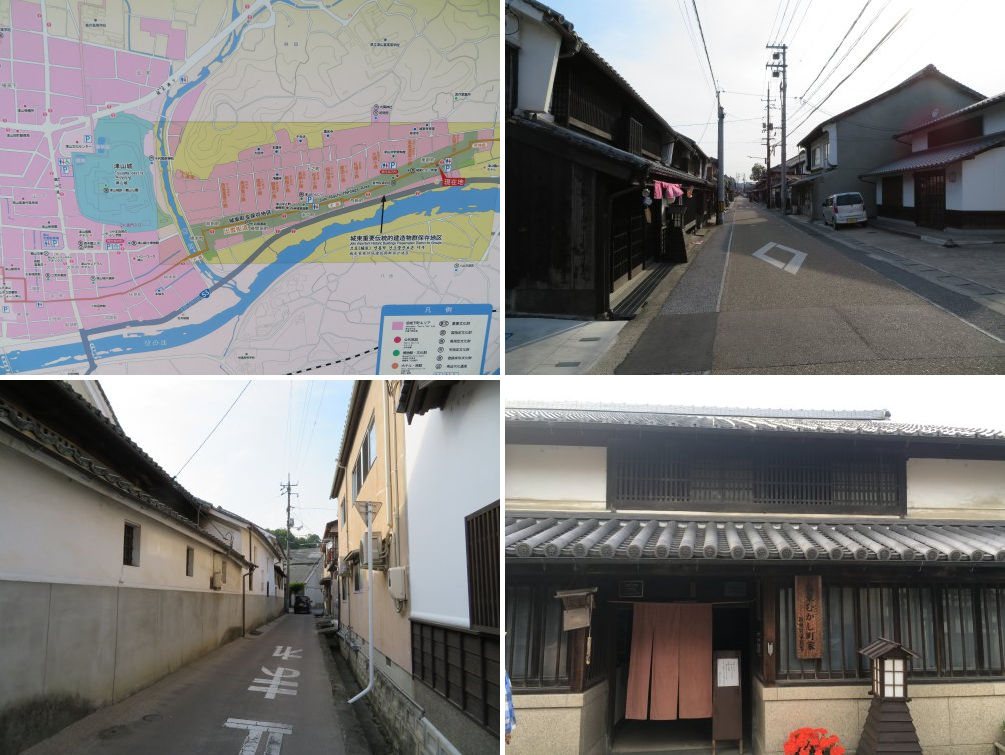
Map of the designated area found at the visitors' car park (upper left), view of row of merchant buildings looking west on the Izumo Kaidou route (upper right), looking north in one of the side alleys (lower left) and the Mukashi Machiya open to the public.
I had managed to purchase a 180 milliliter pack of Kamo-itsuha but could not find a bottle anywhere. I entered a liquor shop that only had 1.8 liter bottles. He allowed me to take a picture of the classic labeled bottles. The sake was neither Junmai or honjouzou but had no added sugar and had an enjoyable classic taste. Judging from the quality of their regular sake (futsuushu), I would imagine their sake is of good quality. We stayed at an onsen ryokan in Yunogou Onsen.
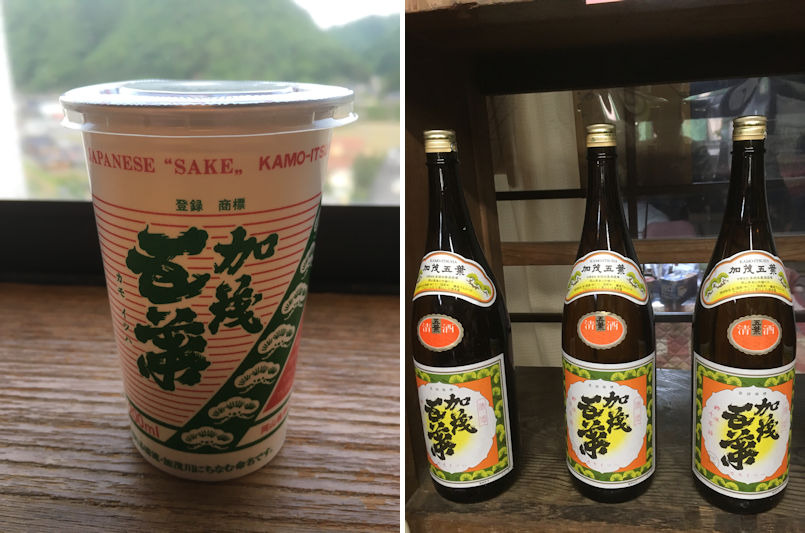
The 180 milliliter and 1.8 liter bottles of Kamoitsuha.
The following morning we went back to Tsuyama City. We visited the Jousai Rouman-kan on the western side of the castle. According to its website, the Rouman-kan is the former main building of Nakajima Hospital next to it. The western style two story building was constructed in 1917, donated to the city in 2008 and converted to a museum shortly thereafter. Admission is free and you can enjoy a nostalgic tour of the former chief doctor’s office and the hospital ward.
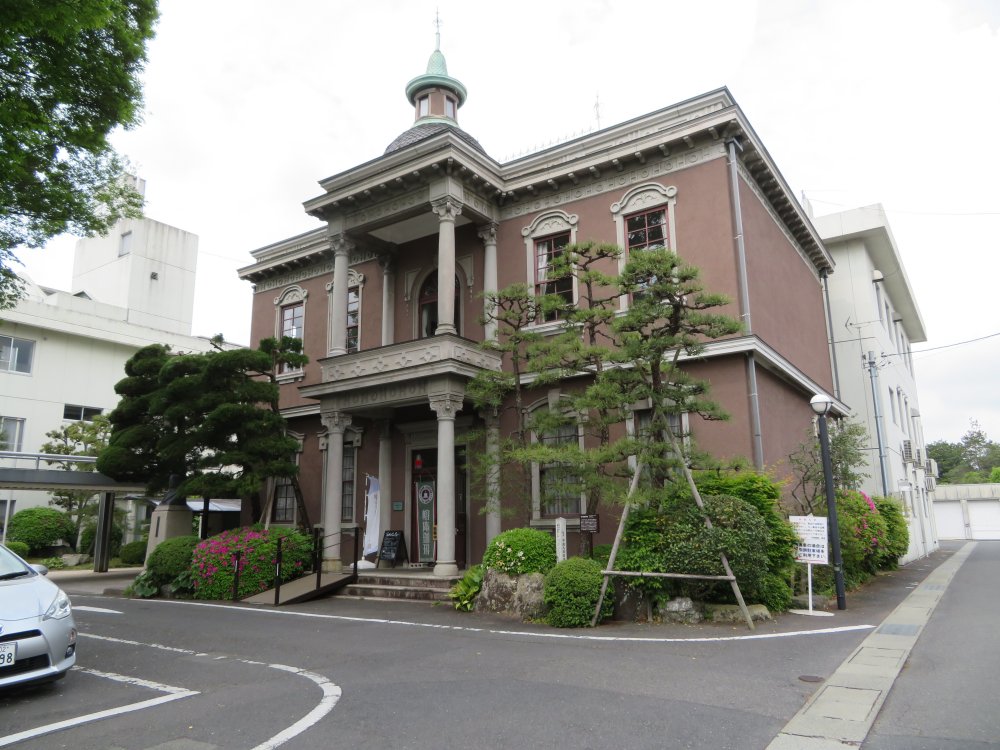
The former main building of Nakajima Hospital now converted to a museum.
From there we went to our next and last destination Kibitsu-jinja Shinto shrine in Okayama City between Okayama Airport and Central Okayama. Nakayama, a mountain 175 meters high was worshipped. We learned on this occasion that there is another Kibitsuhiko-jinja worshipping Nakayama. Kibitsu-jinja protects the north western side and Kibitsuhiko-jinja the north eastern side. We first visited Kibitsuhiko-jinja. The deity worshipped is Ookibitsuhikonomikoto, a mythical character that conquered the land of Kibi by order of the Imperial Court. It is unknown from when this shrine has existed but as the sun at summer equinox rises from the middle of the front torii gate and moves to the main shrine building the origin may have been some kind of sun worship as the shrine website tells us. The border of Bizen and Bicchuu is in the middle of Kibitsuhiko-jinja and Kibitsu-jinja, so some assume Kibitsuhiko-jinja was at some stage split from Kibitsu-jinja which as a Shinto shrine is older. We viewed the main shrine (honden) from ouside. The honden built in 1697 survived the fire of 1930 but most of the shrine buildings were rebuilt in 1936.
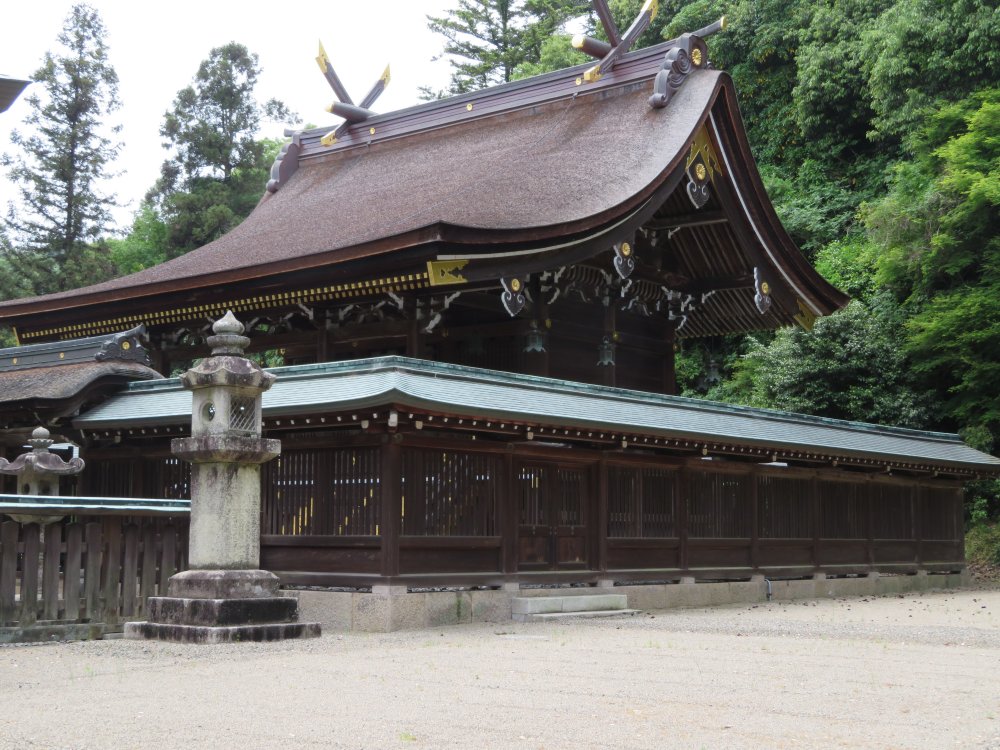
The honden built in 1697 survived the fire of 1930 but most of the shrine buildings were rebuilt in 1936.
There was a beautiful water garden in front of the shrine, as can also be seen in the map. We also viewed the grand Zuishin-mon gate built in 1697, where two deities protect the shrine from invaders.
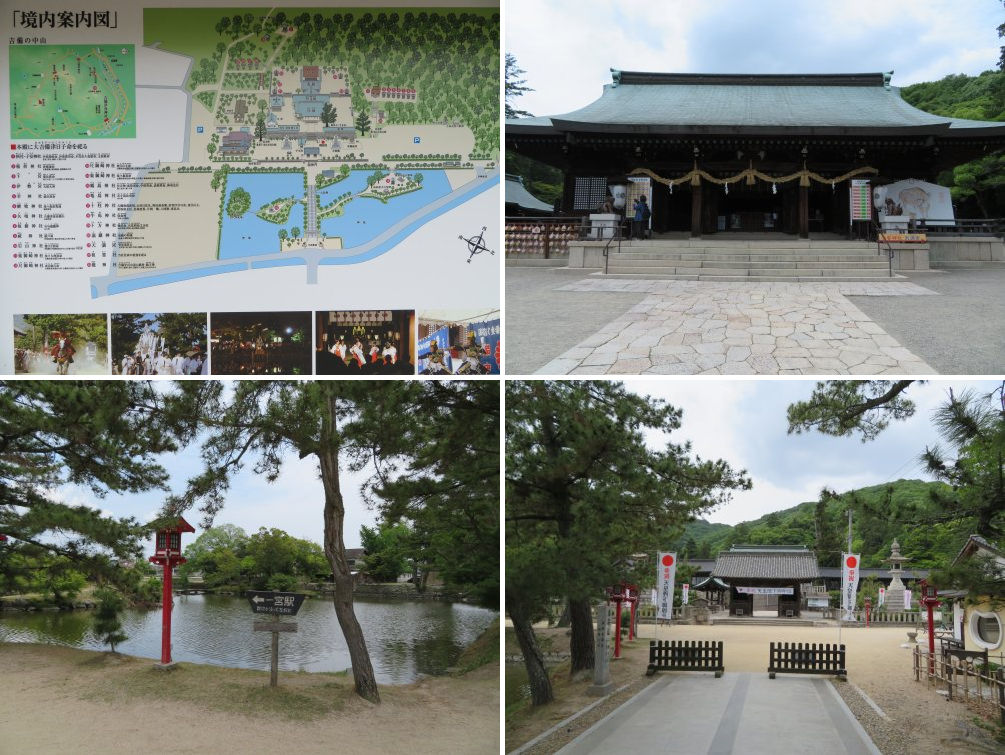
Map of the shrine (upper left), the Haiden prayer building (upper right), the beautiful water garden (lower left) and the Zuishinmon gate built in 1697 (lower right).
We next went to see Kibitsu-jinja Shinto shrine which is only a five minutes’ drive west. As the website of the shrine says, it is unknown by whom and when the shrine was first constructed here. The earliest references to the shrine can be dated back to the 9th century. Historically the shrine enjoyed the patronage of many feudal lords. We went up the steps towards the main shrine (honden) area. Unfortunately, the Kita (north) Zuishin-mon gate was under refurbishment.
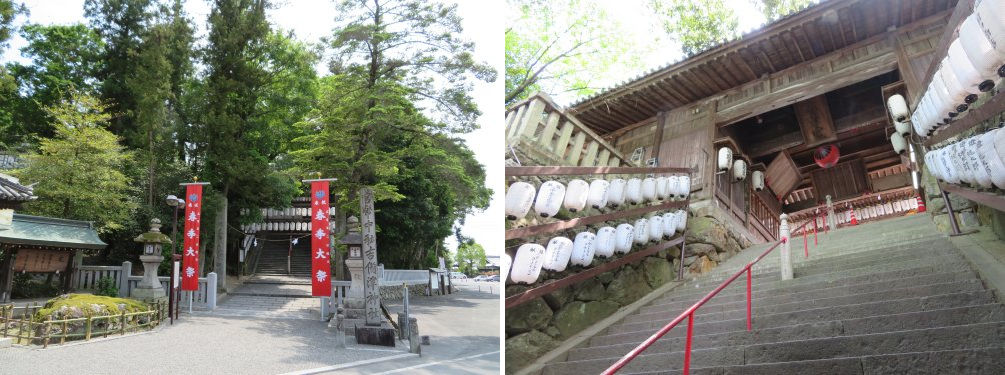
We entered the shrine from the gate by the car park (left). The north Zuishinmon which is at the top of the steps was scaffolded for refurbishment (right).
We momentarily reached the haiden and main shrine (honden) area. People pray from the haiden to the honden. The honden building is a really majestic building. It is twice the size of the honden of the prominent Izumo Taisha and the second largest in the country. It took 25 years to be completed in 1425. It has a unique double roof named Kibitsu Style. The only other example, I understand is the Soshidou in Hokekyouji Temple in Chiba Prefecture, which was built more than two hundred years later. The haiden and honden was designed as a joint building according to the shrines website and have been jointly designated as a National Treasure.

The Haiden (left) and the Honden (right) both designated as a National Treasure.
We went around the honden to view the Minami (south) Zuishin-mon gate. This building constructed in 1357 is the oldest existing building in the shrine.
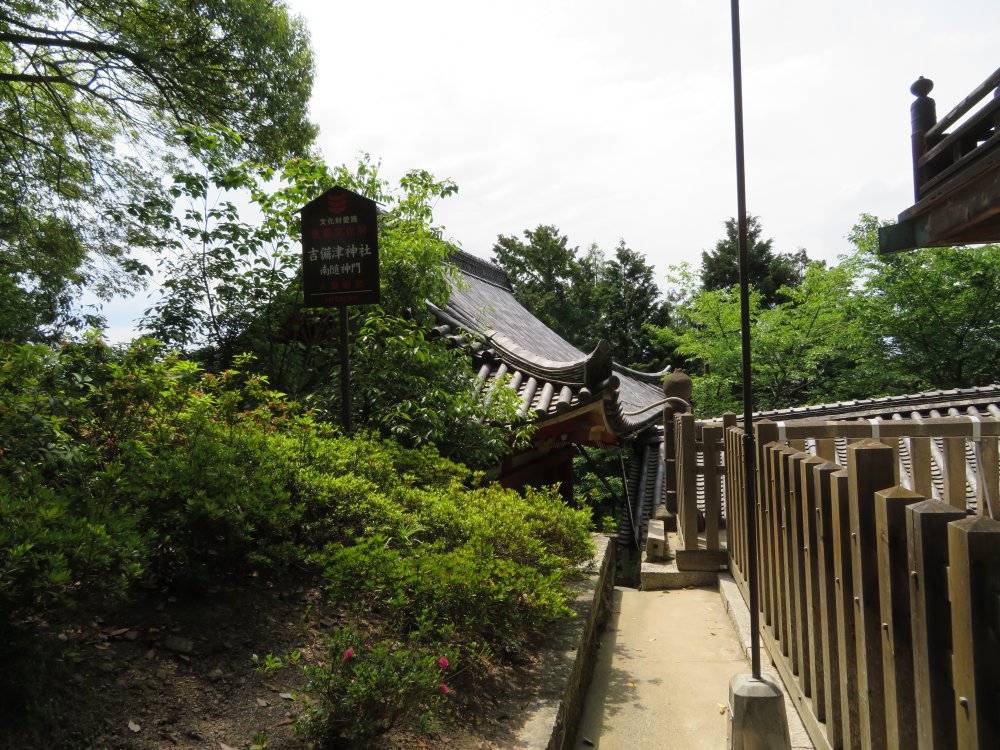
The Minami (south) Zuishin-mon gate constructed in 1357 is the oldest existing building in the shrine.
From there we went back to the haiden and proceeded to the Kairou. This is a wooden corridor about 400 meters long constructed in the late 16th century.
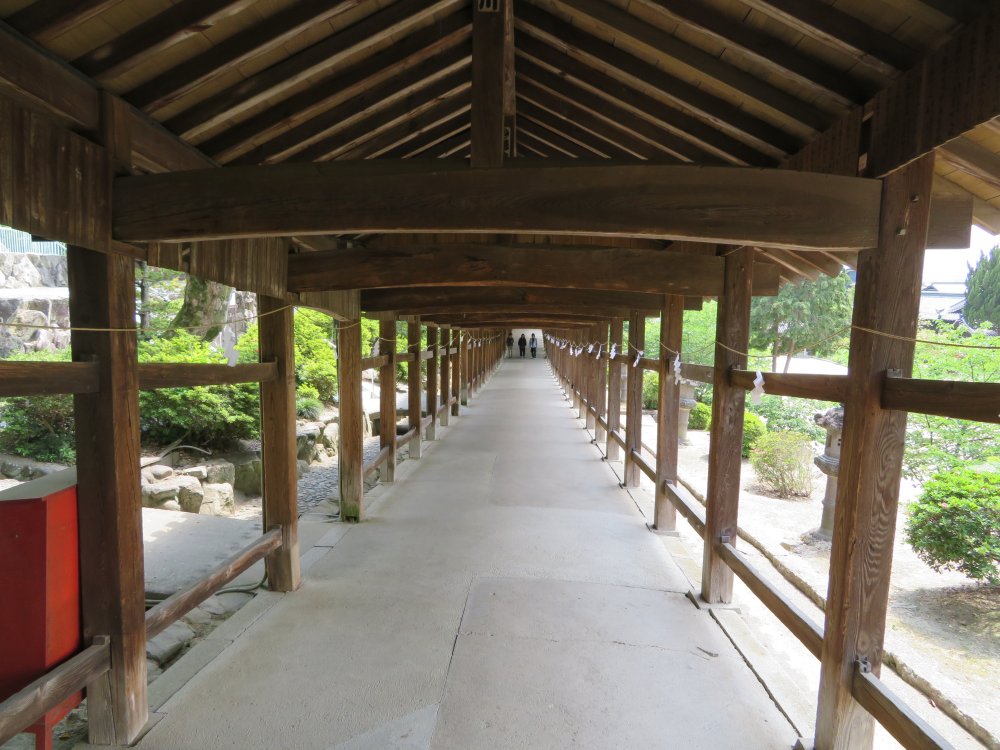
This is a wooden corridor about 400 meters long constructed in the late 16th century.
We swerved to the right close to the end of the corridor to visit the Okama-den. This is a famous place where a ritual is performed to tell whether a wish can be granted. The description beside the building tells us of the origin of the ritual. The demon Ura that was slain by the shrine’s deity Ookibitsuhikonomikoto appeared in a dream and said “Cook offering rice in the pot (kama). If there will be good fortune, the pot will make a gentle noise, and in case of misfortune an angry noise.” You can pay 1,000 yen to be told whether your wish will be granted or not.
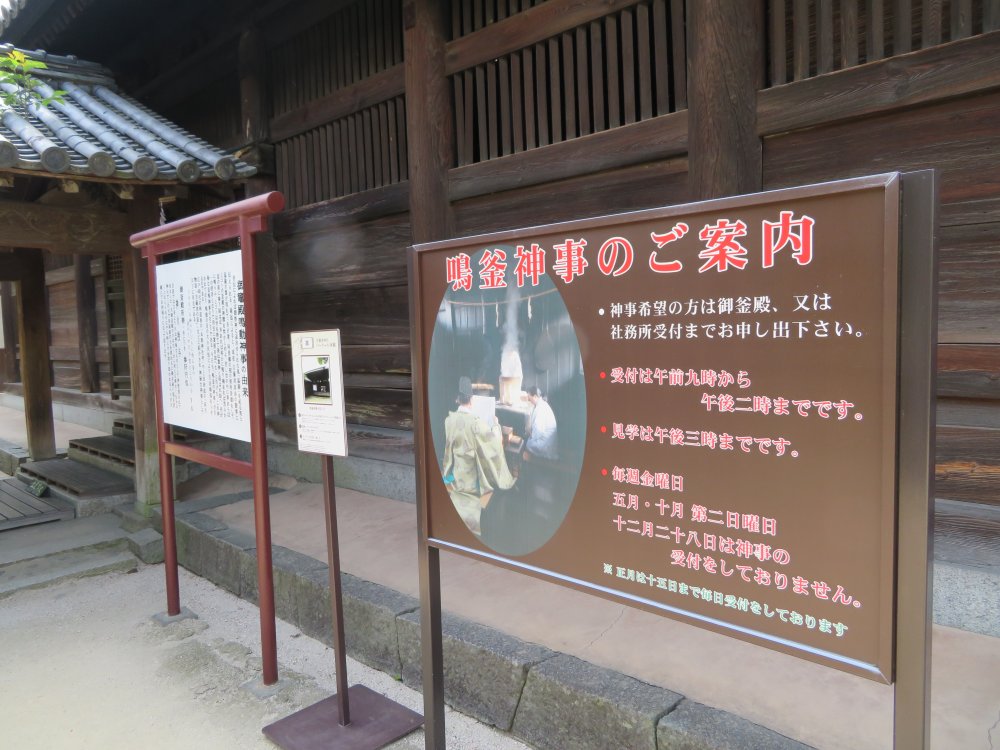
We swerved to the right close to the end of the corridor to visit the Okama-den.
There is a lake in front of Kibitsu-jinja and a bridge and path over it. The path led us to a Buddhist temple. It was with great difficulty that we found the name of the temple, Fugenji of the Shingon sect as the signs were barely discernible. The sanmon is a grand gate but in need of repair. I understand Fugenji is the only temple related to Kibitsu-jinja that has continued to this day.
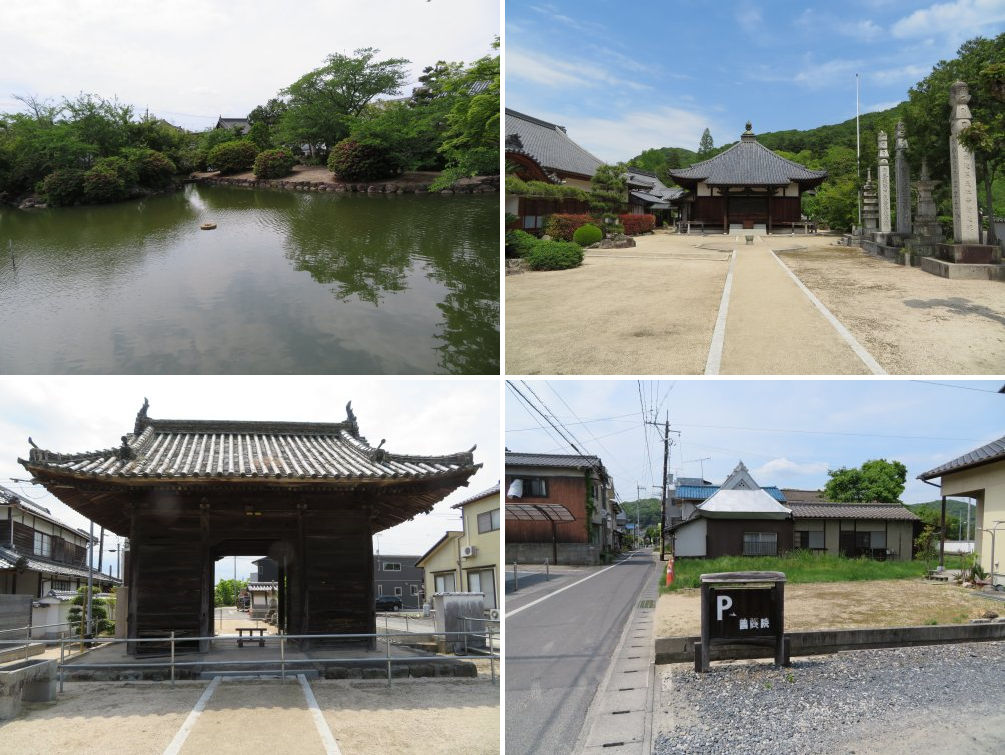
The lake in front of Kibitsu-jinja (upper left), the temple grounds (upper right) and the grand sanmon gate apparently under repair (lower left) The sign by the gate was barely discernible (lower right).
This marked the end of our most impressive excursion of Okayama Prefecture. We looked up once again to enjoy a view of this grand and mysterious old shrine.
